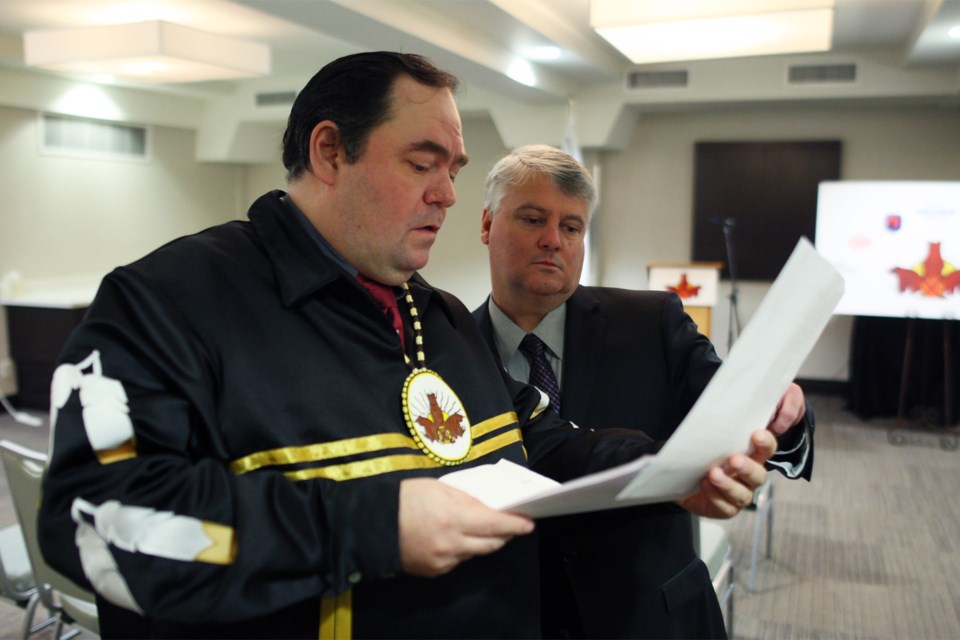Leadership of the working group which seeks to restore passenger rail service has shifted from the City of Sault Ste. Marie to a First Nation whose territory the Algoma Central Railway runs through.
Most recently chaired on an interim basis by Tom Dodds, CEO of the Sault Ste. Marie Economic Development Corporation — who was preceded by then-city CAO Joe Fratesi — the working group will now be headed by the Missanabie Cree First Nation.
Dodds made the announcement in a letter to mayor and council last week.
In the letter, Dodds wished the best for Chief Jason Gauthier of the Missanabie Cree First Nation and for the working group moving forward.
'A brief transition process is underway to ensure that Missanabie Cree First Nation and other passenger train related stakeholders have the appropriate contacts within Transport Canada and CN to endeavour to move this project forward,' wrote Dodds.
Gauthier — representing the Missanabie Cree First Nation and Northeast Superior Regional Chiefs' Forum — has long been a member of the working group and worked toward securing a return of government subsidies to allow the train to operate.
Transport Canada’s Remote Passenger Rail Program (RPRP) offers subsidies for the operation of passenger service where rail is the only means of surface transportation.
The RPRP currently supports two railways that are operated by First Nations groups — Keewatin Railway Company in northern Manitoba and Tshiuetin Rail Transportation which operates between Quebec and Labrador.
The subsidy CN had previously been receiving was cut off as a result of the creation of the RPRP in 2013, as the ACR was not deemed as a ‘remote’ route, with some road access along the line.
Transport Canada told CN in November 2013 it would lose the subsidy and CN publicly announced the closure of the passenger service in January 2014, to the surprise of stakeholders from the Sault to Hearst.
Through lobbying efforts of the working group and others, the $2.2-million subsidy was temporarily reinstated in April of 2014 and a new five-year subsidy was announced last year.
CN continues to own the rail line which runs from Sault Ste. Marie to Hearst, but has said in the past it has no intention of operating passenger rail service along the line but has been open to the idea of allowing a third-party operator to do so.
In March, 2015 the working group announced Wixom, Michigan-based Railmark as the successful third-party operator.
CN ceased operation of the train as of May 1, 2015.
Railmark began operating the service on May 7, 2015 but CN shut down the operation as of July 15, 2015, citing Railmark's inability to obtain financing.
The Coalition for Algoma Passenger Trains (CAPT) — a group which is also affiliated with the working group — hinted Monday that an ‘exciting proposal’ is on the horizon in regards to the service, which it expects will be reinstated by spring.
The Missanabie Cree First Nation was recognized by the Canadian government, but its people were landless until 2010, when the band was transferred 39 square kilometres of land in the Missanabie area, adjacent to the Chapleau Game Preserve.
Currently without a reserve, its members are spread throughout Canada and the United States, with its satellite band office located in downtown Sault Ste. Marie.
In January, the band signed joint venture agreements with industry partners in the mining sector for potential projects which may be developed along the ACR corridor.
In a letter sent last March to then-Transport Minister Lisa Raitt, Gauthier said aside from mining, there is also potential for forestry and tourism businesses to be set up on their traditional territory.
"Members of our First Nations expect to become employees of these businesses and wish to use the passenger train between their homes and work sites in this remote area that has no road access," he wrote in the letter.
